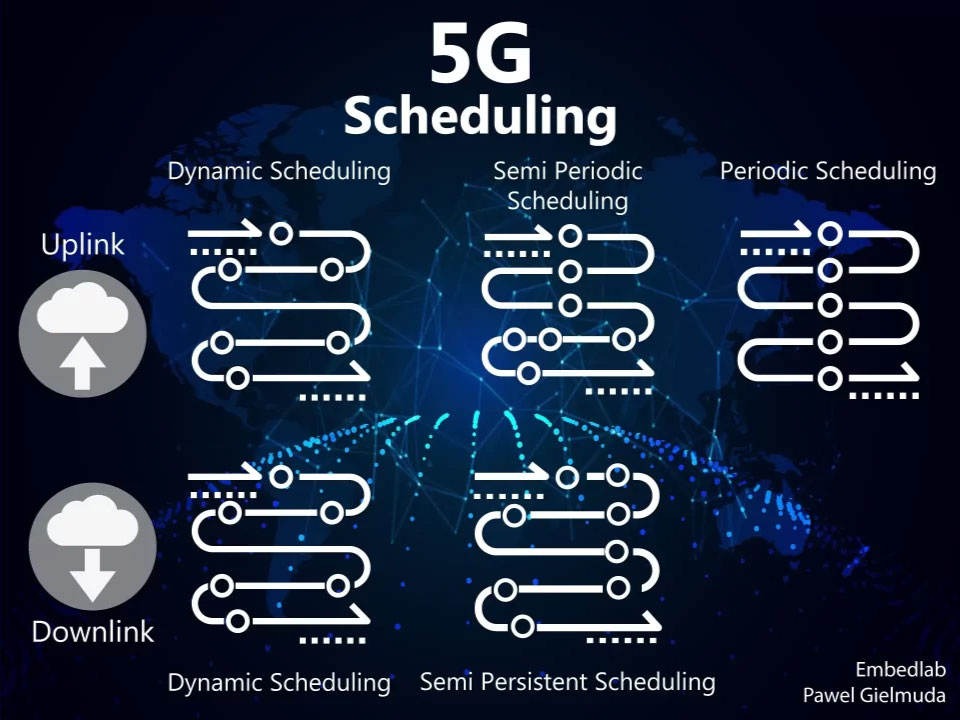How about discussing scheduling in 5G. In NR the scheduling options are tailored to specific use cases.
For the uplink, it is done on user request and there are the following options:
- dynamic scheduling — data could be sent at any moment after quite a lengthy process of requesting the slot for that
- configured scheduling with two types:
- periodic scheduling where after single request uplink resources are assigned in a periodic manner
- semi-periodic scheduling where the above periodicity could be activated or deactivated by a user’s equipment
For downlink scheduling is established when data for UE arrives — this includes:
- Dynamic scheduling with higher latency — ideal for broadband data transfer,
- semi-persistent scheduling which defines periodicity for a specific length of time ideal for low latency data.
The difference between the above is that in the 2nd case the transmission occurs without further notice on predefined slots.
Stay connected to learn more about 5G Scheduling and other relevant topics.

